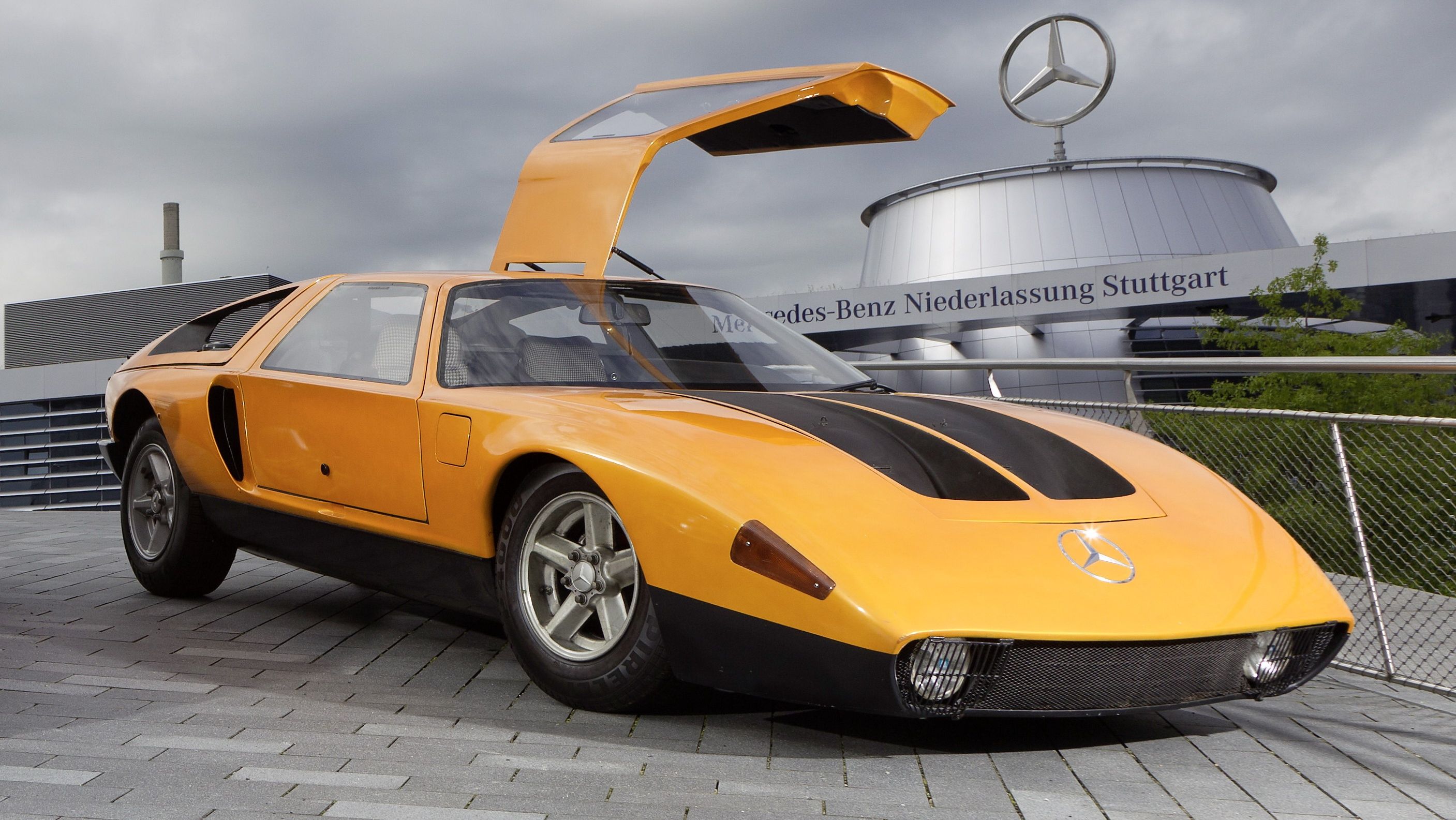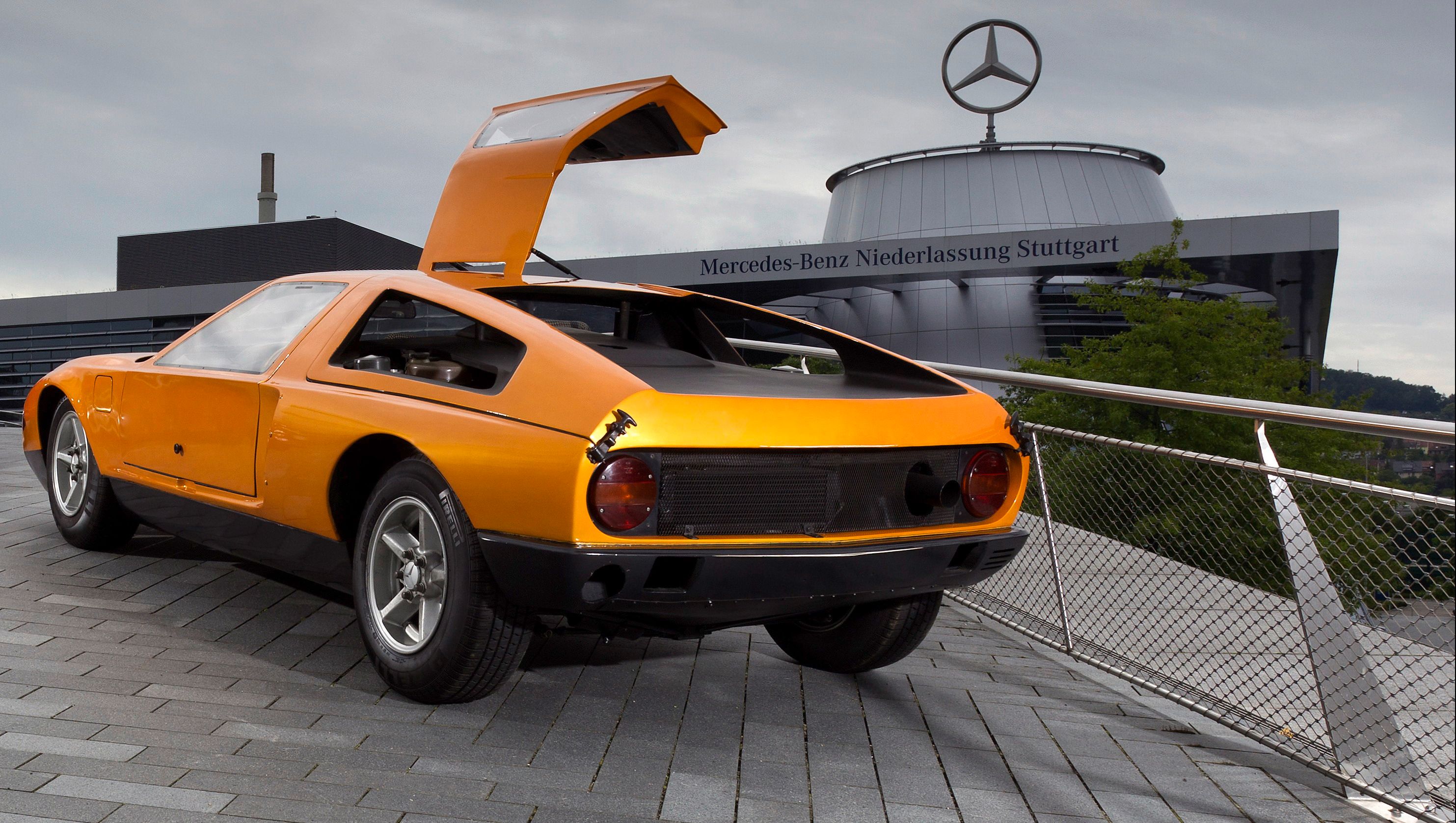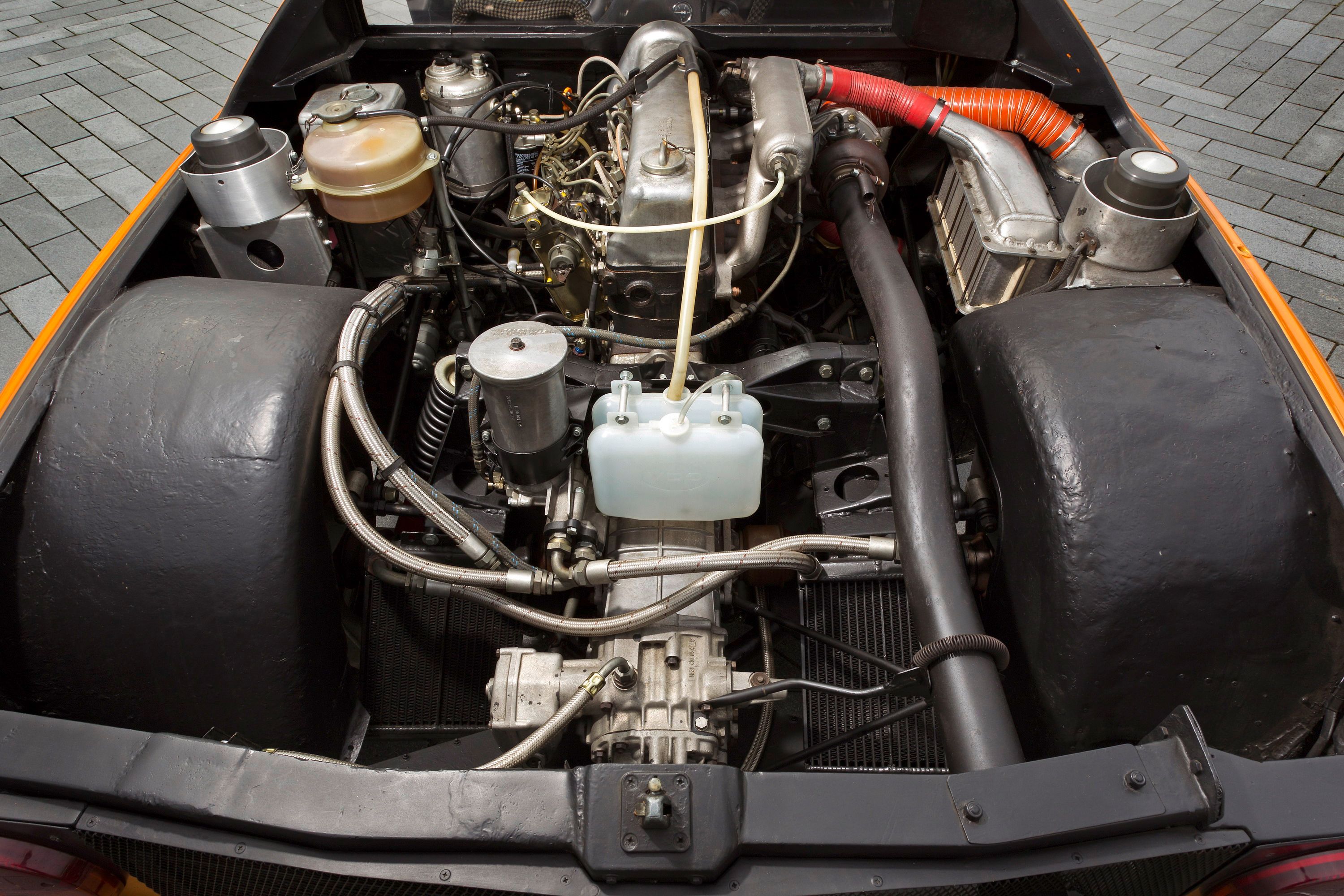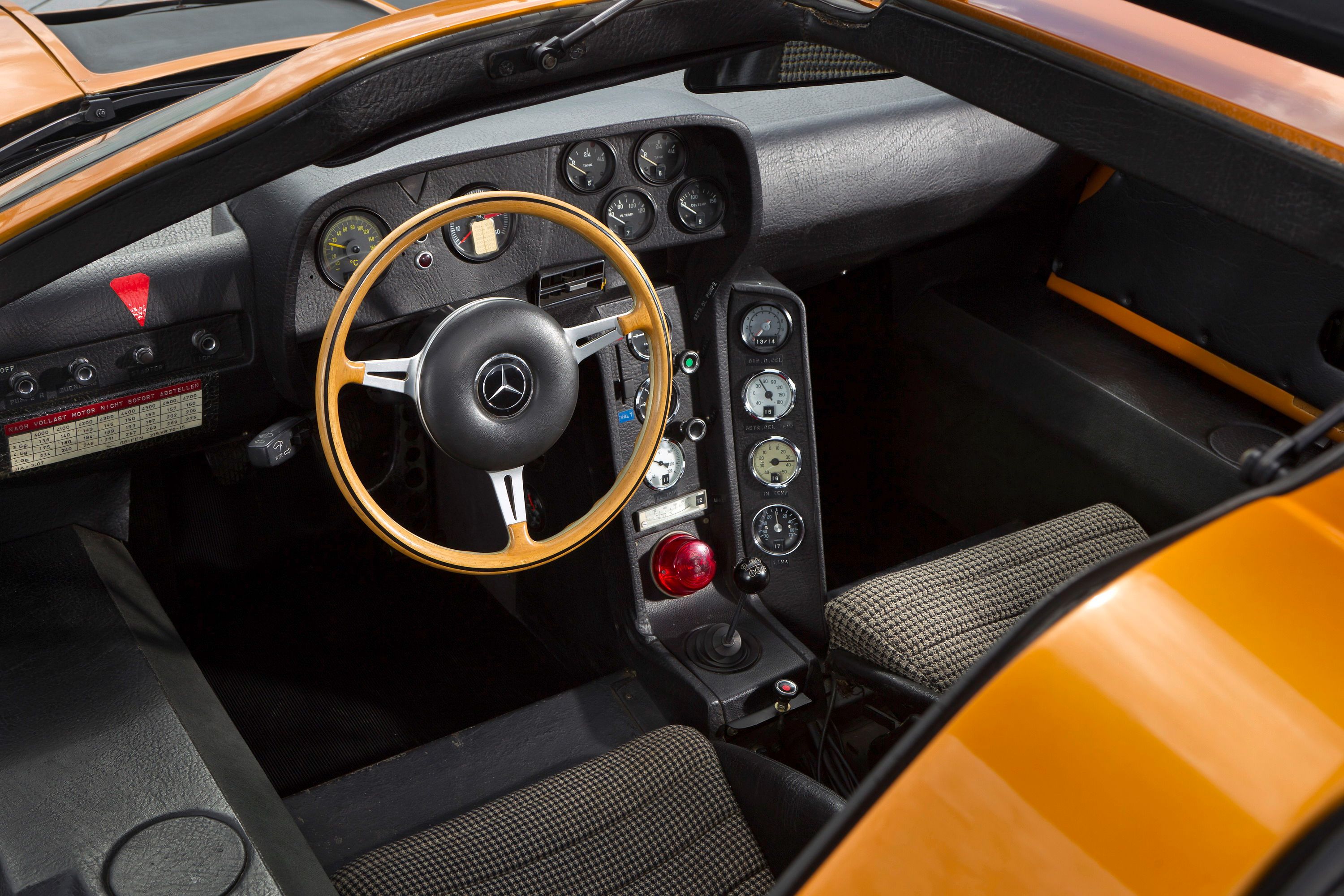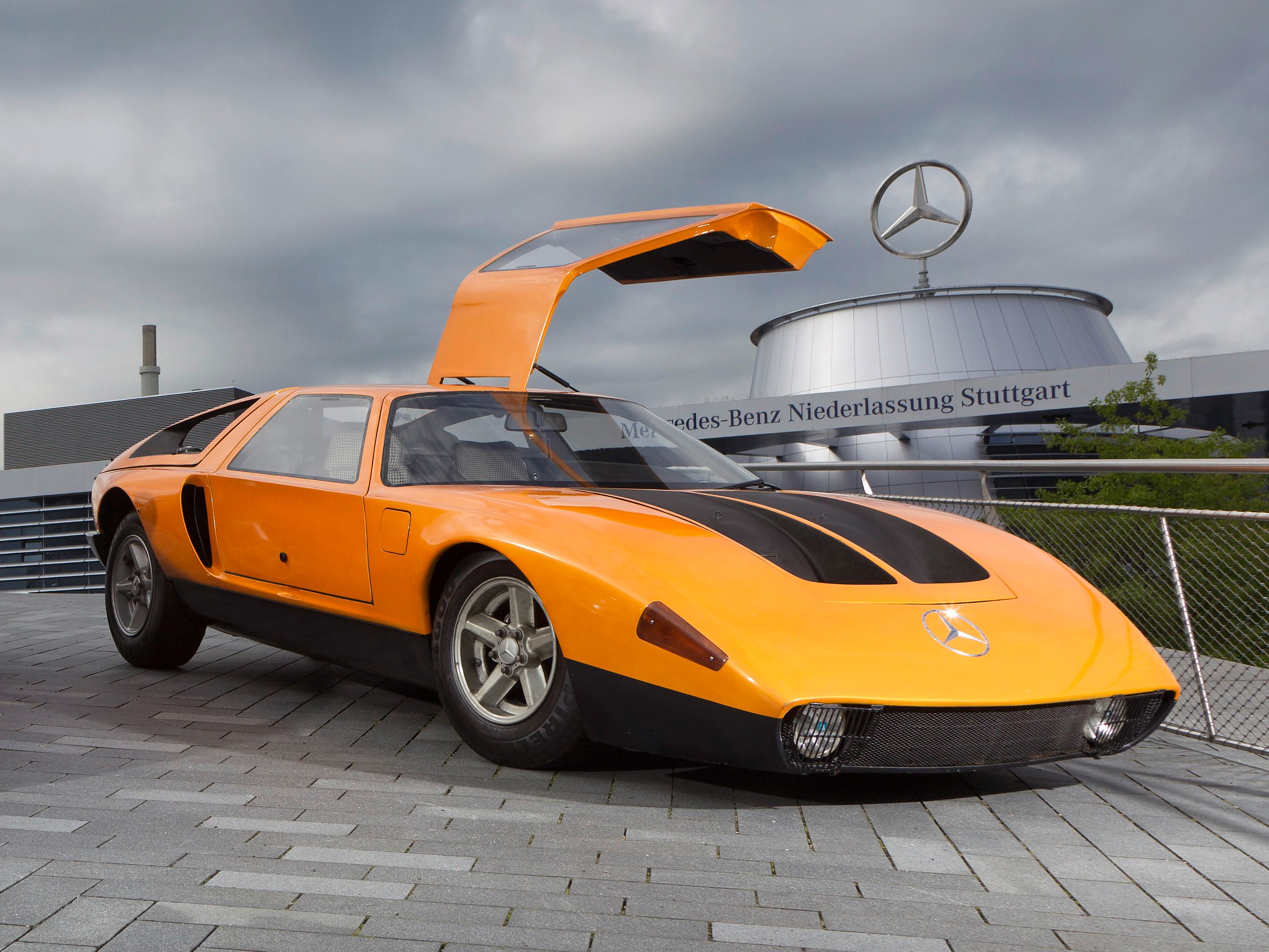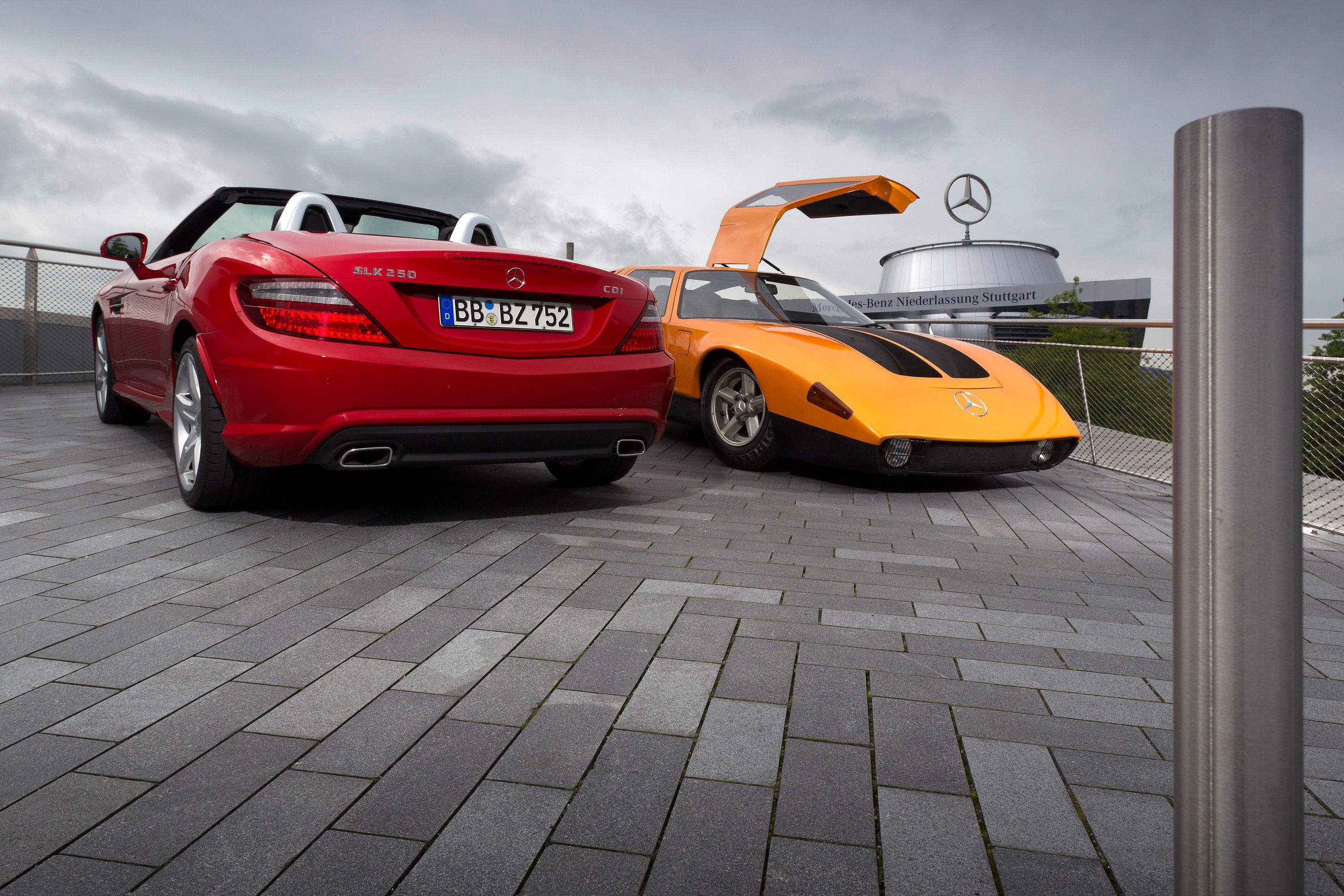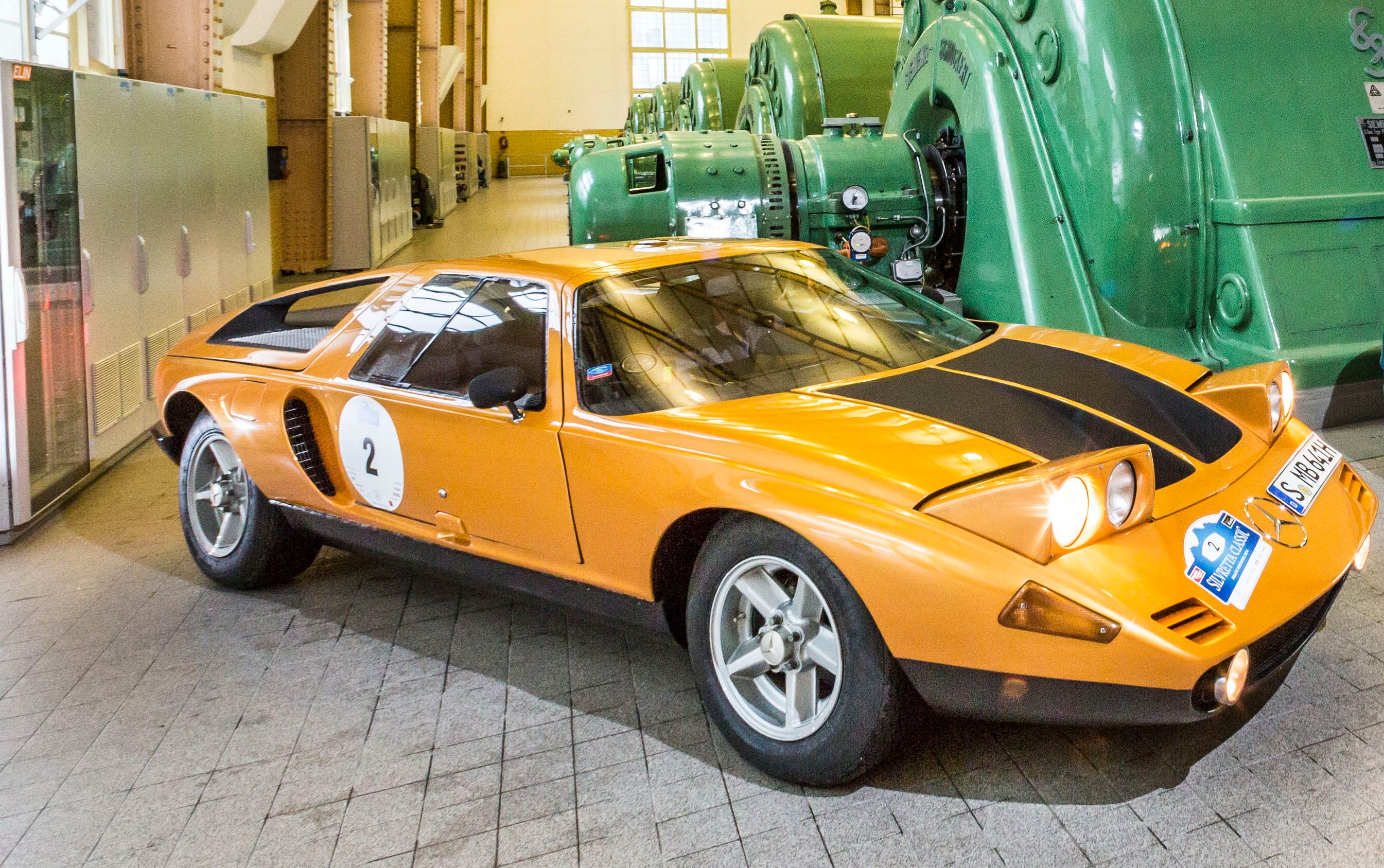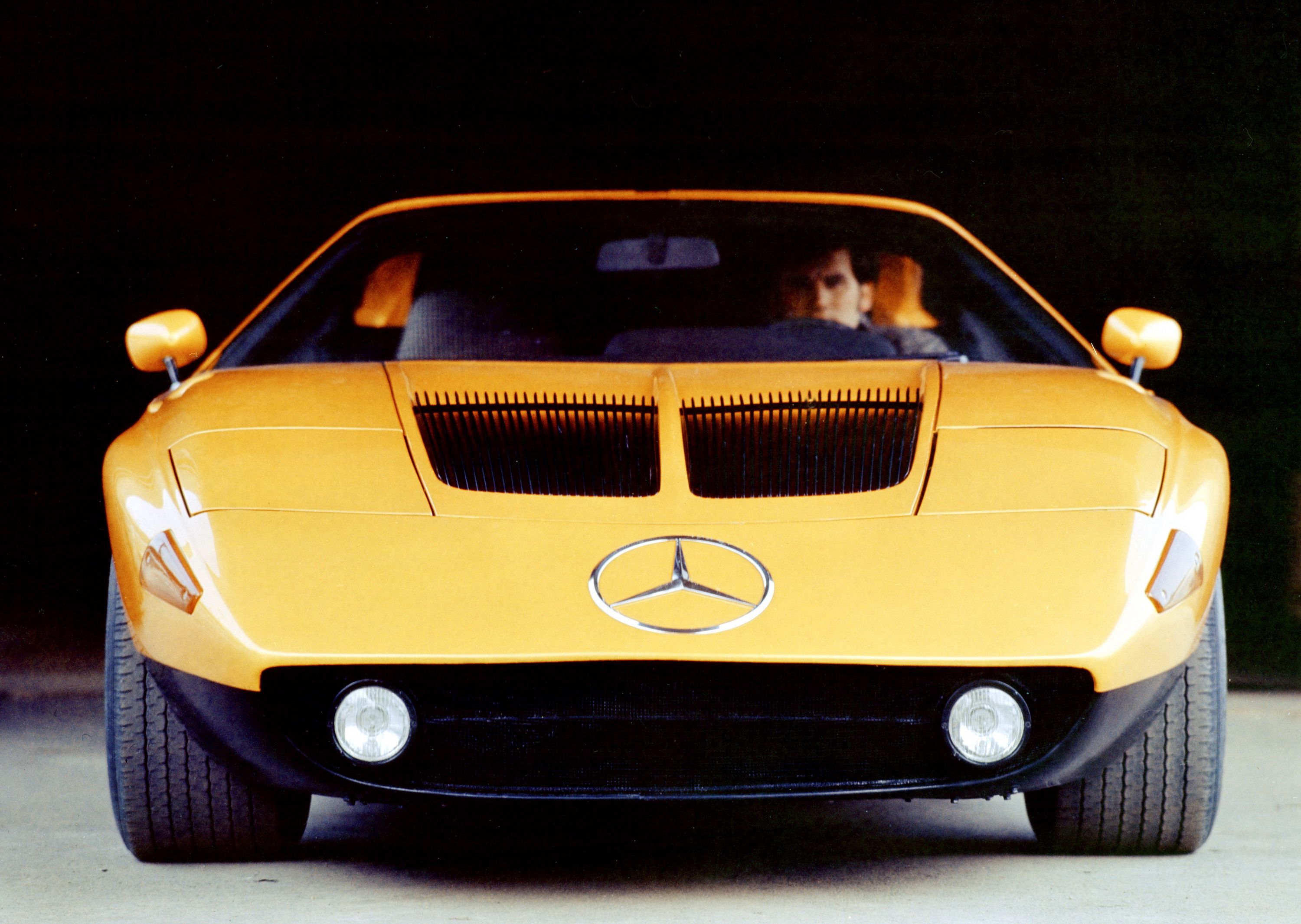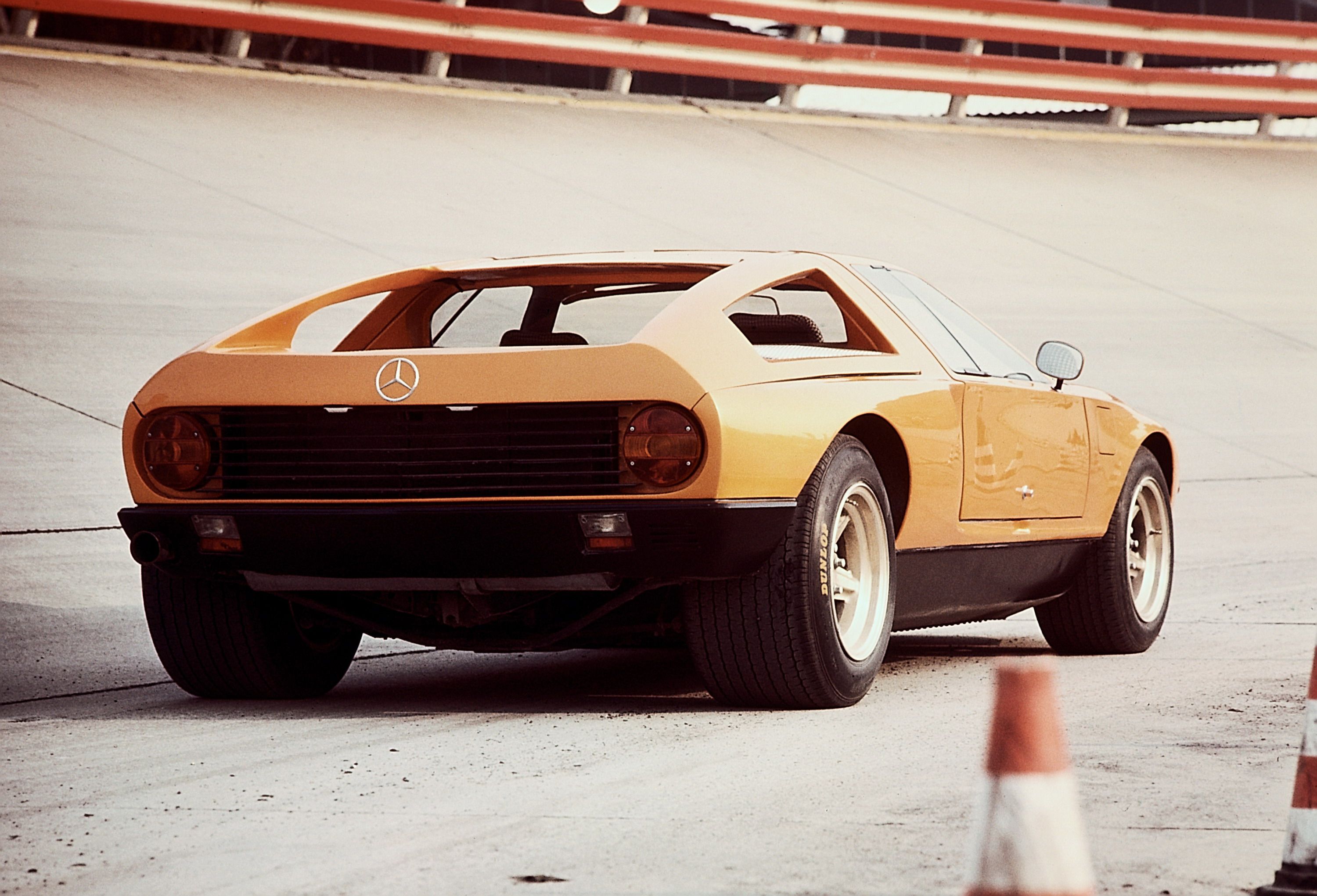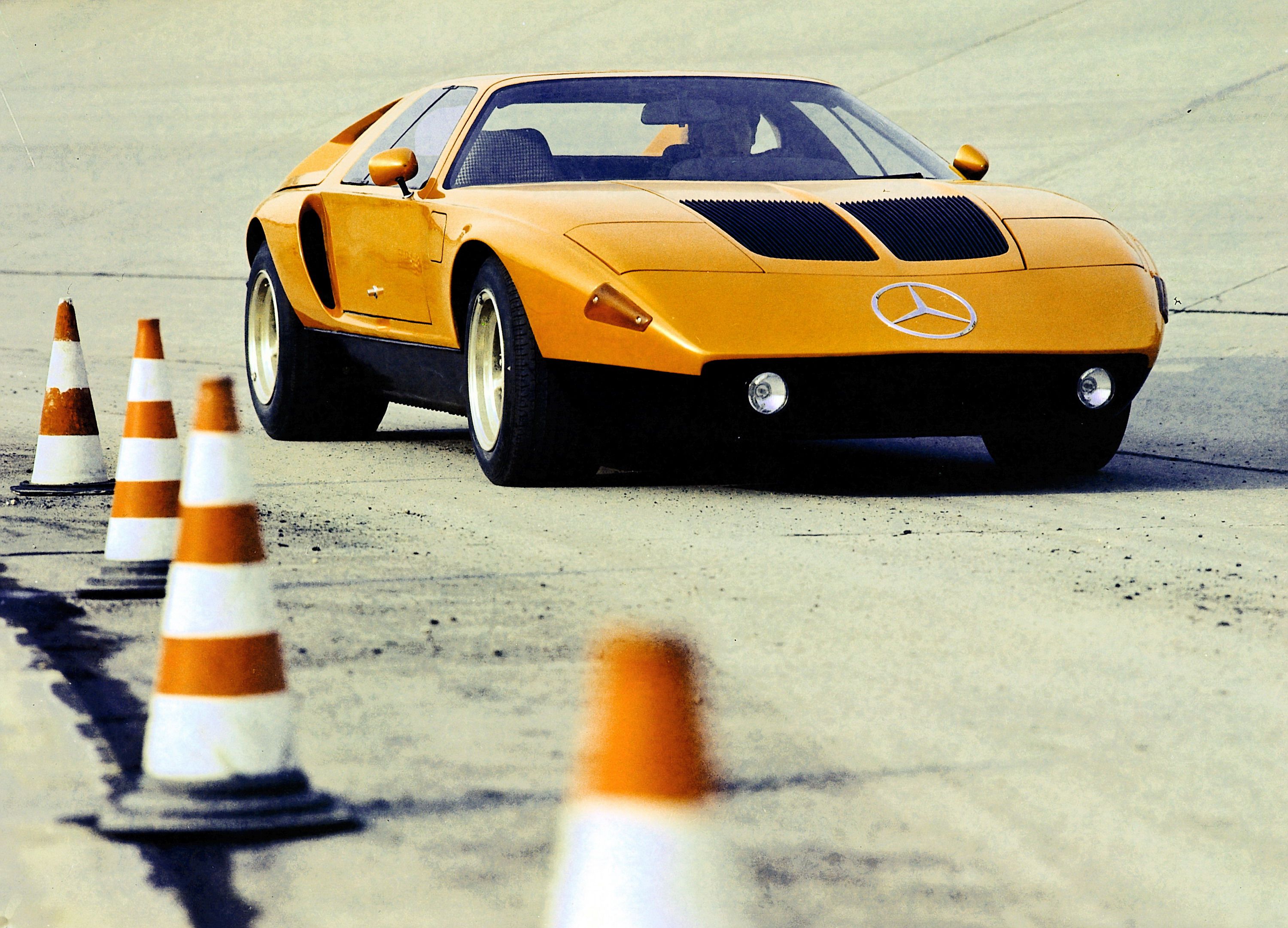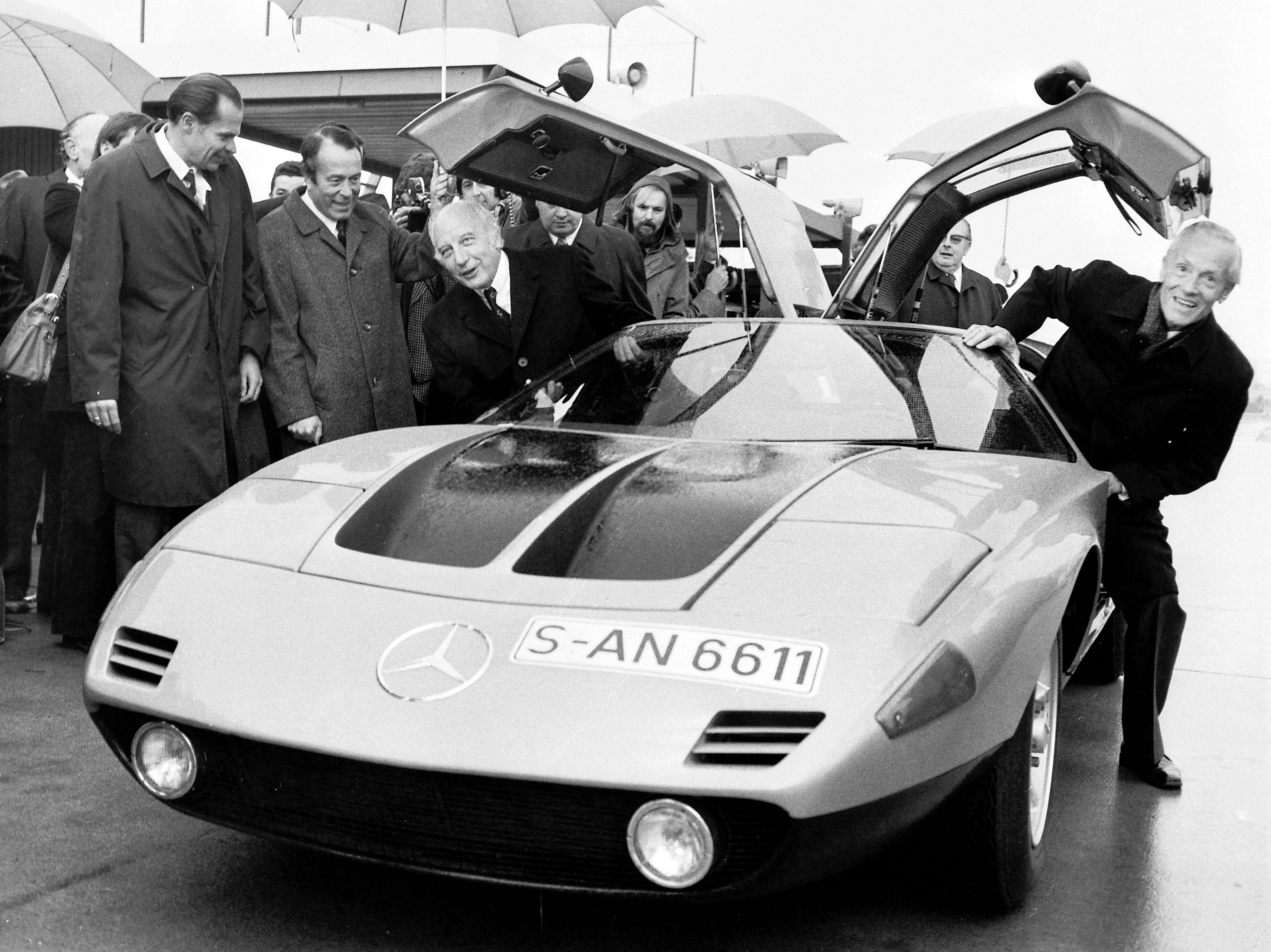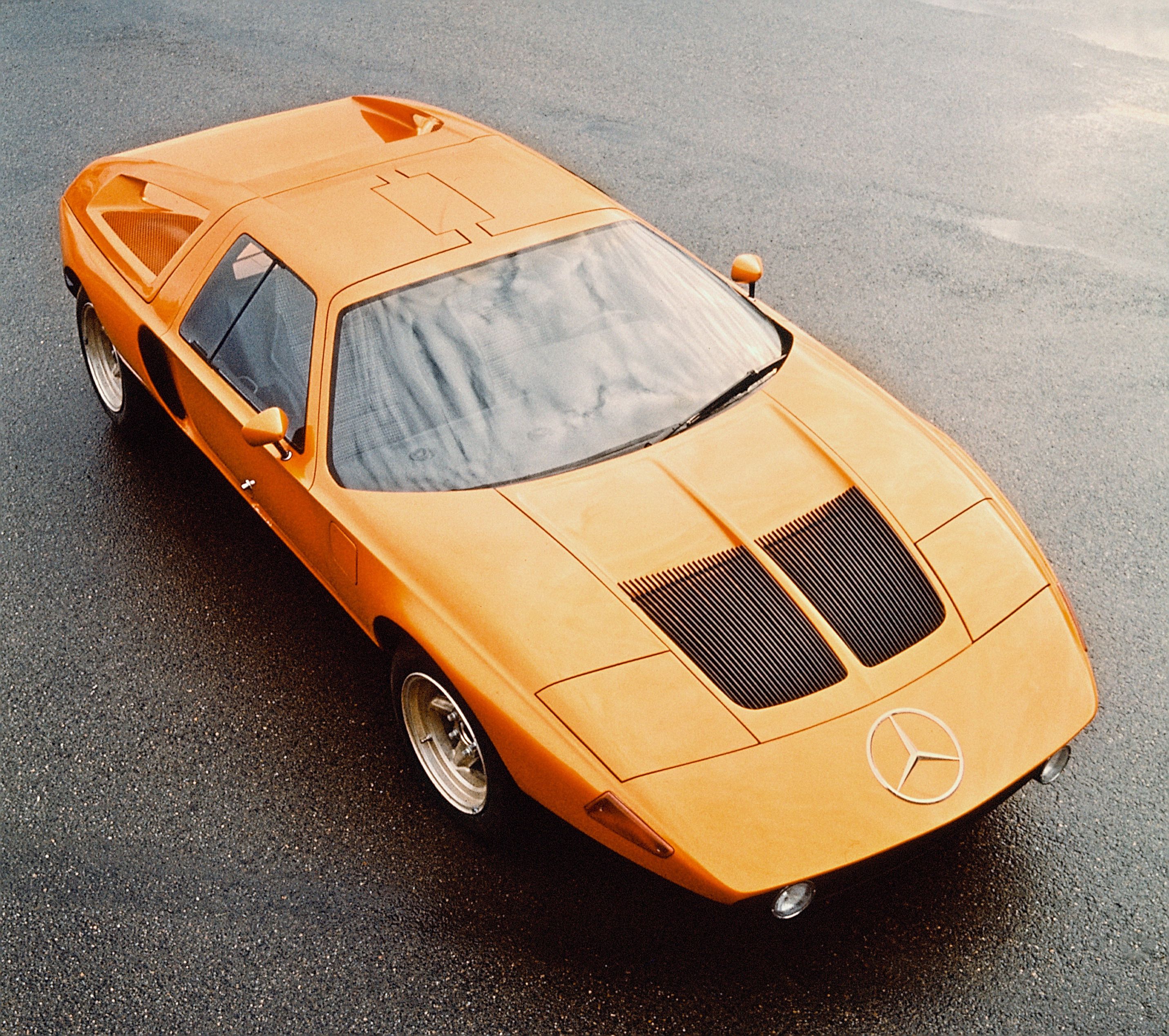The Mercedes-Benz C111 saga began in 1969, when the Germans unveiled the first prototype at the 1969 Frankfurt Motor Show.->ke235 Developed as what Mercedes->ke187 described as a "super sports car,->ke506" the C111 was unveiled to the world with gullwing doors that harkened back to the iconic 300 SL Gullwing Coupe (discontinued in 1963) and a Wankel rotary engine under the hood. Though it was only a research vehicle, the C111 quickly became the dream car of the 1970s.
Created when the company began experimenting with new engine technologies, including rotary, diesels, and turbochargers, the C111 was used as a test bed for many other features, including a multi-link rear suspension, and a new interior design with luxury appointments and air conditioning. It featured a mid-ship layout and received many powertrains, including two- to four-rotor Wankels, turbodiesels, and even mass-produced V-8s.
Although Mercedes built three generations of experimental C111s, the C111-II is arguably the most recognizable, particularly due to its revised aerodynamics and improved ergonomics, which pretty much made it ready for the assembly line. Unfortunately, the C111 projects never made it into production, leaving enthusiasts that were dreaming about a spiritual successor to the 300 SL disappointed. But, despite the fact that not one C111 was sold to the public, the C111-II went on to gain a cult following and became a full-fledged classic.->ke503
Continue reading to learn more about the 1970 Mercedes-Benz C111-II.
mercedes-benz-c111-ii
- Make: Array
- Model: mercedes-benz-c111-ii
1970 Mercedes-Benz C111-II
- Make: Array
- Model: 1970 Mercedes-Benz C111-II
- [do not use] Vehicle Model: Array
Exterior
The C111 was penned by Bruno Sacco, who Daimler-Benz had hired as a stylist in 1958 and appointed as head of its design center in 1975. Until he retired in 1999, Sacco was responsible for the design of every Mercedes road car, bus, and truck. At the time of its unveiling in 1969, the C111 knocked everyone's socks off due to its radical design. Unlike any production car or prototype Mercedes had launched until then, the C111 featured a wedge-shaped, supercar-like body that seemed like something Ferrari or Maserati would design. It wasn't German at all, and it created quite a stir.
Although it retained the shape, size and most of the design cues of the first-generation prototype, the C111-II received significant changes. The nose was reshaped for improved aerodynamics, while the plastic-covered headlamps were replaced with round units in the lower grille. The pop-up units remained in place, but the turn signals were moved to the fenders. The front hood was also redesigned, gaining a more aerodynamic shape and two vertically oriented vents instead of the C111's horizontal unit. The Mercedes star was repositioned closer to the nose.
The side panels remained relatively unchanged, but the gull-wing doors were modified taller windows for improved visibility, as was the front windscreen. Because rear visibility was also an issue with the C111, the C111-II gained a heavily revised engine lid without side louvers. If this looks familiar, it's because Maserati used a similar approach for the Merak and the Bora, both of which were launched in 1973. The rear fascia was clean and simple, featuring two round taillights and a massive grille between them. Despite its mundane rear bumper and side-mounted exhaust, the C111 was pretty aggressive to look at from behind, especially thanks to its beefy tires.
This prototype was the most aerodynamic of all C111s, boasting a 0.325 drag coefficient. It might not sound like much today when the Mercedes-Benz CLA->ke3130 can brag about a Cd of 0.28, but it was rather impressive for the early 1970s. For reference, the C111-II is more aerodynamic than supercars such as the Ferrari F40 and F50, and about on par with the McLaren F1->ke1159 and the Koenigsegg CCX.->ke567
The sports car created such a sensation when it first appeared at the 1970 Geneva Motor Show->ke228 that Mercedes received blank checks from several enthusiasts that viewed the C111 as a spiritual successor to the iconic 300 SL Gullwing Coupe.
Interior
The C111's interior was far from revolutionary and it wasn't as luxurious as a 1970s S-Class, but it had a strong sports car feel attached to it. The vertical center stack was driver-oriented, while the dashboard seemed borrowed from full-fledged race cars. Since the C111-II arrived long before Mercedes decided there won't be a production version, the second-gen prototype was built with production in mind. The window line was lowered to improve visibility, while the fact that the body was wider above the side sills provided generous shoulder room.
In terms of materials, most surfaces were wrapped in leather, while the seating surfaces were cloth. Though most Mercedes of the late 1960s and early 1970s had wood inserts or even wooden dashboards, the C111 didn't use such material. Most likely Mercedes wanted to keep the sports car as light as possible, but it might have something to do with the fact that Stuttgart wanted to set the C111 apart from its regular models.
Drivetrain
Originally, the C111-II was an evolution of the Wankel-powered C111 and received a four-rotor engine producing a whopping 370 horsepower. The unit was based off the C111's M950F, a naturally aspirated Wankel built in only 12 units. Each rotor had 600cc (0.6 liters) and power peaked at 7,000 rpm. The C111-II reportedly could reach a top speed of 180 mph, a tremendous figure for the early 1970s.
As Mercedes-Benz decided to drop rotary engine development due to poor fuel consumption after the 1970 Geneva Motor Show, the C111-II was retrofitted with a V-8 powerplant. The Germans used the same 3.5-liter unit (codenamed M116) that debuted in the 300 SEL in 1969, but massaged it to deliver more than the standard 200 horsepower and 211 pound-feet of torque.
The M116 would be used until 1980, finding its way into the W109, W111, W116, R107, and C107 models.
In the C111-II, the V-8 mated to a standard five-speed manual transmission. Because Mercedes wasn't interested in testing transmissions, they went with what was available at the time, picking the same unit offered in the 280 SL. The V-8, on the other hand, was used to test the rigidity of the chassis and the fiberglass bodywork.
Restored in 2014, the C111-II now has about 205 horsepower on tap, which is significantly less than the 350-horsepower, four-rotor Wankel. However, since the old rotary engines are hard to maintain as to keep the prototype operational, Mercedes-Benz opted to restore the sports car with the V-8.
Stopping power comes from ventilated discs at all corners, a feature that wasn't exactly common on production cars back in 1970, but something you'd rather find on race cars.
The suspension was experimental and featured anti-squat and anti-dive control. Following intense testing, the C111's front axle components were incorporated in large-scale production and the rear axle was a precursor of today's multi-link independent rear suspension. These features made it onto mass-produced Mercedes vehicles beginning with the late 1970s.
Conclusion
When it comes to prototypes that should have made it on the production line, the Mercedes-Benz C111 is definitely one of them. Unfortunately for Mercedes-Benz fans, the German company shelved the project by the end of 1970s, after testing several turbodiesel powerplants and setting a few world records in the process. Granted, the C111 would've failed to live up to the hype with a diesel engine (not to mention that the rotary units were too polluting for the early 1970s and their fuel consumption was relatively high), but for some reason Mercedes didn't consider a V-8 or V-12 mill. Maybe it was the 1973 oil crisis or the fact that Stuttgart simply didn't want a sports car back then, but the love the C111 still receives in the 21st century proves that the Germans should have green-lighted the project.
Mercedes actually tried to make it up in the early 1990s with the C112, but that's another story for another time.

